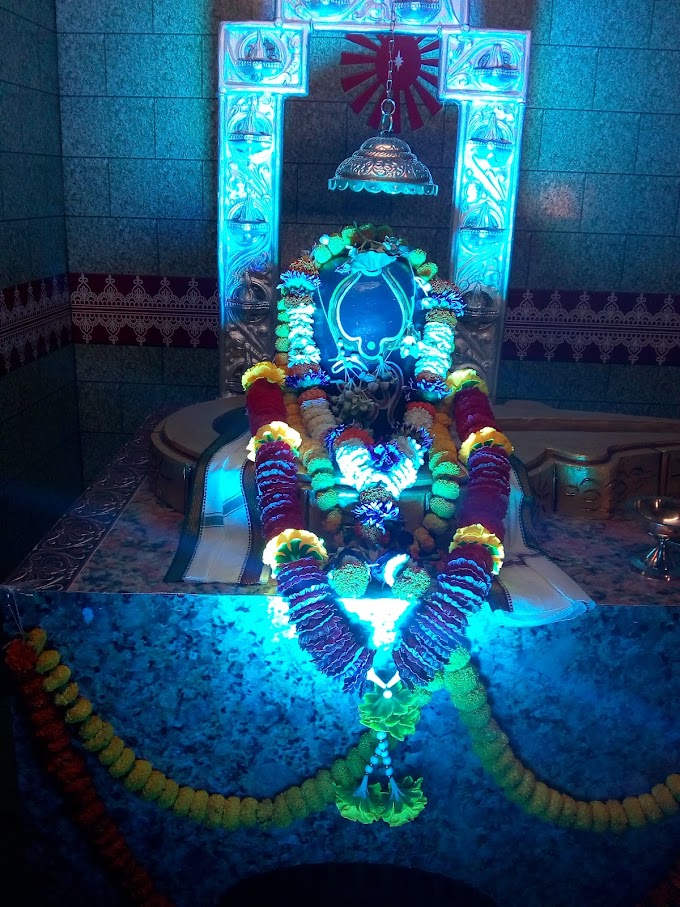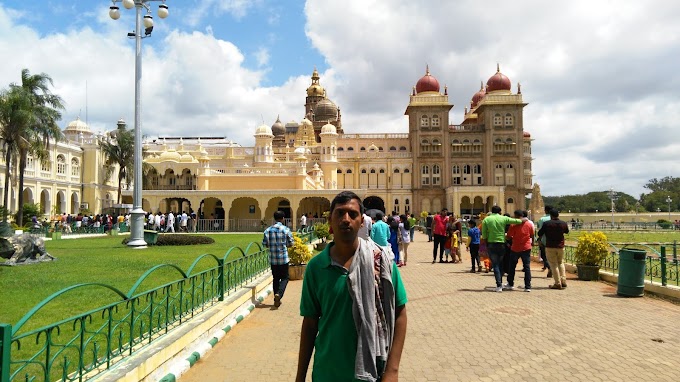LIVING METHOD OF
TRIBE AND THEIR CULTURE: ORISSA TRIBAL CULTURE
The
word “Culture” is an obligatory concept like “society” but it is also
vague and contested. For the existence of a culture is necessarily required a
society. The Culture is often described as social rather than individual, local
rather than universal, learned rather than instinctive, historical
rather than biological, evolved rather than planned, distributed
rather than centralized. The foundation of a culture is depend upon ceremony,
tradition, socialization, food, Arts and literature, livelihood etc.
The
definition of word “schedule tribes” has not been defined by any scholar till
yet but in my opinion the Schedule Tribes means a particular society occupied
by group of nomadic people who maintained their live through hunting and
gathering of wild fruits, tubers and edible roots and live like as ancient
civilization.
The Tribes in India were occupied by groups of nomadic people, who
survived on the basis of hunting and the gathering of wild fruits, tubers, and
edible roots. The only traces left by these early food gatherers are simple
stone instruments found on the exterior of many parts of the Deccan; so far
there has been absence of skeletal remains of the early races have been brought
into the present.
The Tribes in India were occupied by groups of nomadic people, who
survived on the basis of hunting and the gathering of wild fruits, tubers, and
edible roots. The only traces left by these early food gatherers are simple
stone instruments found on the exterior of many parts of the Deccan; so far
there has been absence of skeletal remains of the early races have been brought
into the present.
In
Indian there are nearly 650 scheduled Tribes residing and out of them nearly 62
type of schedule tribes are from Odisha. In compaire to other State, Odisha is
a small state but the lifestyle of the Schedule Tribes are more important for
the “Troposphere” as well as the contribution to the economy. The major tribes
in Odisha are Bonda, Gadaba, gond, Juang, Kondh, Oraon, Paraja, Santhal,
Sauora, bhottada, Munda etc. There are 65 % of Schedule Tribes derives from
Santal, Kolha, Munda, Saore, khond and Gond
In
Odisha, the tribals are mainly active around the forest. Mainly the livelihood
comes from agriculture and farming but in some cases fishing, cattle breeding
craft due to use of new of technology
and demand of tribal’s goods. The Ancient Tribals are mainly found on hills or
close to river bank near the forest.
As per the Census
2011, the State of Odisha has the third highest percentage of tribal population
in the country which is calculated as 95,90,756. The State of Orissa / Odisha
has the unique number of having 62 different tribal communities spread over 30
districts and 314 blocks and 22.85% of the total population of the state. The
growth and distribution of ST population have got special significance.
The
lifestyle, tradition, food and behavior are different from one category of
Schedule tribes to another Schedule Tribes and one area to another area.
IMPORTANT FEATURES ABOUT TRIBAL SOCIETY.
I.
They live in relative isolation
usually in hill sand forests in interior area.
II.
Their family is nuclear family
III.
Their social identity is defined
and redefined from time to time.
IV.
They constitute simple societies
which are socio-culturally homogenous.
V.
They have their written and oral
language for communication.
VI.
They have their rich cultural
tradition and heritage although their social organization is simple.
VII.
The tradition and life style is
very old and effective tradition.
THE RIGHT OF SCHEDULE
TRIBES ARE PROTECTED BY GOVERNMENT OF INDIA
The
right of the Schedule Tribes are protected by the Constitution of India and
consider as weaker section of the society for which they are enjoyed the
special statue and the Government of India has provides many facilities to them
for their development. At present, the government of India provides many
facilities in service, education, political and financial help also. For the
development of Schedule Tribes, the Government has also invested money through many
scheme.
Normally
the tribals are nuclear families consisting of man, wife and unmarried children
(after marriage children lives separate) but in Tribal society the rights of
man and woman are equals and there is no difference with regard to work and
decision making in their family. The tribal means independence and personal
freedom. In India as well as in Orissa are free to possess the ability to
transfer from one group to another. The man and women are free to chose their
life partner with whom they desire to be lived. Marriage rules are based on the
exogamy. such group holds hereditary
rights to acquire the land.
The
tribal people believe in making money to earn their living, they are
transferable and migrate from one region to another in search for jobs or sale
of craft.
SOCIAL ACTIVITIES:-
A popular dance which is normally performed in
every village of Koraput, Kandamal, Balangir district in Orissa is very
charming. This is such a group dance which consists both men
and women of all ages. They perform the group dance knitting fingers
of one another and with the tunes of the instruments. Although all
tribes perform the Dance only the Koya’s style and expression
is eye-catching. The Koya male put on the horns ofthe bison during the
dance. The beautiful song, dance, musical instruments associated with
these performances by the tribals and their colourful costumes and
ornaments are the greatest attractions for the viewers.
The similar dance are performed in
the district of Keonjhar, mayurbhanj, Sundargard also during their festival. In
Orissa one hill station which runs from north to west and west to south. There have
some similarity from district to district and one tribal to another tribal.
The Government of Orissa has tourist package for the travelers for Tikarapada and Satakosia at Dist.- Angul. On the said package provides the tribal dance and way of living.
The
important festival of the tribal people is Chaitra Parva which is known as Bija
Pandu festival . It is observed by the tribal of Koraput Mayurbhanj, Sudargarh
and Keonjhar. Bhuiyans tribes of Mayurbhanj, Sudargarh and Keonjhar are an ancient Hindu tribe who greatly
influenced the culture of the other tribes.
The
Kondha Tribe of phulbani District is mainly celebrate Kedu festival and this
festival has been celebrated in some part of Ganjam and Korapur. Once upon a
time this festival was well known for all due to human sacrifice “Meria”. During
ruling period of British, British stopped the such activities of the Tribal
peoples.
The
tribal society has been also observed the “HARVEST FESTIVAL” such as HO, Oraon,
Kisan etc. during this festival they used to wear new cloths and tribal dance
with instrument. This festival observed in the name of Village Deity.
ART, CRAFTS AND BUSINESS:-
The artistic skill of
the tribal people is not only evident like their dance and music but
also in their dress and ornaments, wall paintings, wood carving and toy
making etc. The Saura tribal painting are familiarly
to their religious beliefs and drawn in order
to appease demigods and spirits. But through art and craft their self
image and aesthetic sensibility are visualized. The Saura tribal painting
is very popular.
Now days the tribal’s are provides Honey,
Ayurvedic medicine, many mixture of ground spices. And the tribal are very close with other
society due to its natural product and its business
METHOD OF TREATMENT:-
Orissa’s tribal are the most primitive tribe, there is the
belief that disease is caused by hostile spirits, the ghosts of the
dead or due to the violation of some taboo. In the realm of netting
the tribals are still living in the age of magic or black magic with its
practitioner. Till date in that area people are murdered the person who are
practitioner in black magic.
Indigenous methods of treatment of the diseases among the tribal can be divided into two categories one is Magical cure and other is Medicinal cure. In case of epidemics like small pox, cholera or cattle disease they believe that it is caused by the evil influence of the Duma (Ghost). The family has to celebrate a worship to village goddess to cure. For that they sacrifice the birds.
They also know the procedure of use
of Ayurvedic and some society particular are used Ayurvedic medicine instead of
black magic or worship to Goddess
By their magical
performances they also cure various kinds of disease likes to mach trouble,
fever etc. Before proper treatment the tribal doctor or “Disan” called
upon to attend a patient for diagnosis. For the diagnosis, what is
known as “Chaula Khoja” any malerelative of the patient brings a handful of
rice which the patient is made to touch.
The tribal culture is so much
liberal and simple. A deep observation, and analysis regarding
tribal culture will clarify our understanding. On account of these above
reasons the tribals of these parts are considered as simple, truthful
and freedom. The modernization and the process of globalization has made
some changes in their society in field of their life style, food, way of living
style but their costumes, tradition and cultural history will remain popular
in the world.
















